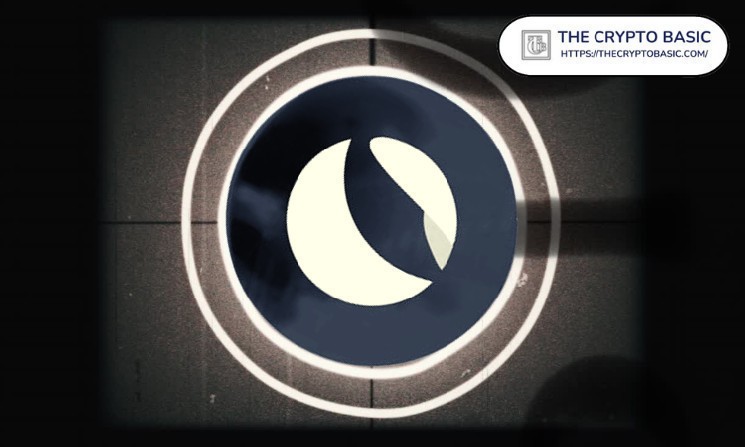Terra Classic Core Developer Reveals Proposal To Eliminate Canonical LUNC Repo

The proposal will eliminate the need for a central authority overseeing code changes to the blockchain.
Edward Kim, Terra Classic developer and associate professor at Drexel University, has proposed eliminating the existing canonical repository for the Terra Classic blockchain. If the proposal passes, code changes made by developers will not be overseen by a central authority but by the active validator set, further promoting decentralization.
Motivation Behind the Proposal
Ed introduced the proposition on Thursday, explaining its details and the motivation behind it as he opened it for community discussion. According to Ed, Terra Classic developers are still facing the issue experienced when Terraform Labs had absolute authority over code changes made on the blockchain.
Discussion for no canonical repository for Terra Classic, https://t.co/j2TqbIt9cA
— Edward Kim (@edk208) January 5, 2023
He noted that the developers currently working on the chain do not have write access to the current canonical repository for the blockchain, dubbed “Classic.”
After the Terra implosion of May, which birthed the Terra Classic (LUNC) token, the Terra Money Classic Core repo was created and served as the canonical repo for the blockchain. Consequently, code changes made on the Terra Classic chain were subject to the approval of Terraform Labs since the firm oversaw the repo. But TFL were more focused on the Luna blockchain, leaving Terra Classic unattended.
In September 2022, Proposal 4940 passed, aiming to make the Terra Rebels “Classic Core” repo the canonical repository for the blockchain. However, following patches made to the repo to fix the Dragonberry exploit witnessed in its IBC code, the current “Classic” repo emerged as the canonical repo.
Impact On The Procedure For Terra Classic Code Changes
If the proposal passes, the Classic repo will cease being the canonical repository, and upgrades made on the Terra Classic blockchain will be overseen by the community, going through a few procedures. According to Ed, these upgrades should contain commit hashes detailing the changes and always start with the active or latest commit hash on the chain.
Additionally, Ed noted that all the appropriate entities; including validators, projects, nodes, and CEXs; should receive information on the upgrades being made. He pledged the L1 team’s support in compiling and offering the necessary information on their repo.
These procedures might be cumbersome for developers and validators alike, Ed said. Developers would have to go through greater scrutiny from the community before making code changes as they attempt to garner community trust. For validators, it will require extra effort to oversee the code changes embedded in any upgrade.
Even so, the proposal’s benefits, as Ed outlined, include proper reviews from the community on upgrades being made on the blockchain. Secondly, it promotes decentralization by allowing any competent group of developers to contribute to upgrades on the network.






 Bitcoin
Bitcoin  Ethereum
Ethereum  Tether
Tether  USDC
USDC  TRON
TRON  Dogecoin
Dogecoin  Cardano
Cardano  Bitcoin Cash
Bitcoin Cash  Chainlink
Chainlink  LEO Token
LEO Token  Zcash
Zcash  Monero
Monero  Stellar
Stellar  Litecoin
Litecoin  Hedera
Hedera  Dai
Dai  Cronos
Cronos  OKB
OKB  Tether Gold
Tether Gold  Ethereum Classic
Ethereum Classic  KuCoin
KuCoin  Gate
Gate  Algorand
Algorand  Cosmos Hub
Cosmos Hub  VeChain
VeChain  Stacks
Stacks  Tezos
Tezos  Dash
Dash  TrueUSD
TrueUSD  IOTA
IOTA  Basic Attention
Basic Attention  Theta Network
Theta Network  Decred
Decred  NEO
NEO  Synthetix
Synthetix  Qtum
Qtum  0x Protocol
0x Protocol  Ravencoin
Ravencoin  DigiByte
DigiByte  Zilliqa
Zilliqa  Nano
Nano  Siacoin
Siacoin  Numeraire
Numeraire  Waves
Waves  Enjin Coin
Enjin Coin  Status
Status  Ontology
Ontology  BUSD
BUSD  Hive
Hive  Lisk
Lisk  Pax Dollar
Pax Dollar  Steem
Steem  Huobi
Huobi  OMG Network
OMG Network  NEM
NEM  Bitcoin Gold
Bitcoin Gold  Augur
Augur  Ren
Ren